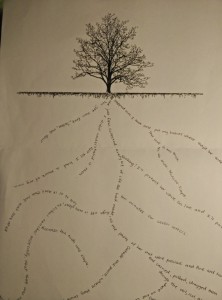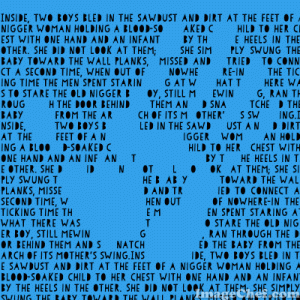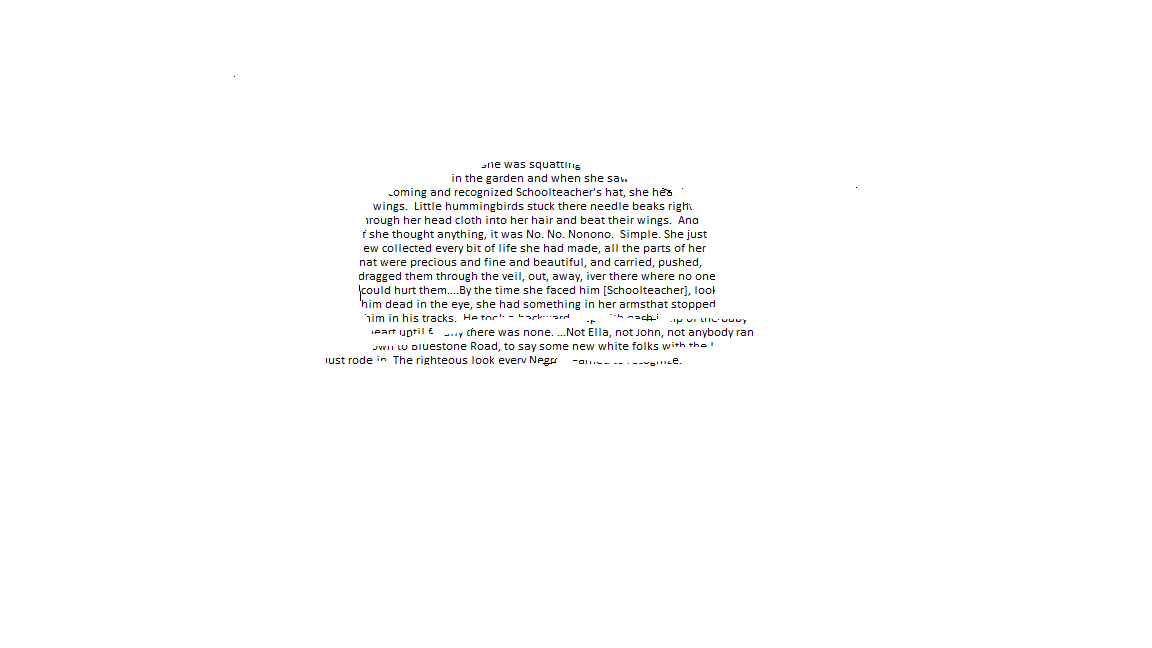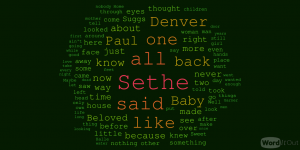Beloved Part 1 Project 2 by Keith Smith
In this story by Toni Morrison, I was hoping that Halle was going to be a bigger impact. But instead he mentally breaks and has no worth after that. I am going to show you how wonderful he was, and the impact of him on every one’s life According to the author’s words, and I quote from Denver’s thoughts ”She said she was always a little scared of my daddy. He was too good, she said. From the beginning, she said, he was too good for the world.”(pg. 245). She goes on with ”My daddy was an angel man. He could look at you and tell you where you hurt and could fix it too.”(pg. 246). So like Paul D. in this story, they both seemed like kind and wonderful men. That either one could contribute to Sethe and her life. They actually almost made it together, because Halle and the others planned for the escape. This is where the book talks about the discovery of the train to freedom with “Halle was pointing over the stable.” “Sixo say Freedom is that way.”(pg. 233). And this is where Sethe loses Halle. “But I got you out baby. And the boys too. When the signal for the train come, you all was the only ones ready. I couldn’t find Halle or nobody.”(pg. 233). Of course Sethe would go back to Sweet Home, only to find Paul D. and learn Sixo was dead. Halle could not be found. Having sent her kids ahead and alone, she is put through the psychological wringer from the taking of her milk. This is where the book talks about Halle being there. And then goes crazy. After being whipped for telling Miss Garner, she finds no reason to stay and look for Halle. Sethe claims at this point “I did it. I got us all out. Without Halle too.”(pg. 190). I also believe that she was in no shape to do this alone but she did. I think this is where she decides “I couldn’t let all that go back to where it was, and I couldn’t let her nor any of em live under schoolteacher.”(pg. 192).
But you have to admit that having Halle with her would have made her stronger. And not only that this was the same guy that worked to free his mother. And Baby Suggs remembered her freedom on page 166 “These hands belong to me. These are my hands. Next she felt a knocking in her chest and discovered something else new: her own heartbeat.” What a wonderful feeling that must have been, for her. And one of the things I liked about Halle is he stayed true to his words and continued to work off his remaining debt, even after Baby was free. The only thing about this story was how would Baby Suggs react to not seeing her son. I was able to pull out her true feelings when in the garden she ponders “What was left to hurt her now? News of Halle’s death? No she had been prepared for that better than she had for his life.”(pg. 163). So you can see the impact that one man had on everyone’s life. I feel that this really hurt Baby Suggs the most because on page 27 she says “A man aint nothing but a man.” “But a son? Well now that’s somebody.” And what did that mean: “Sethe had the amazing luck of six whole years of marriage to that “somebody” son who had fathered every one of her children. A blessing she was reckless enough to take for granted, as though Sweet Home was really one.”(pg. 28). A rarity that this story produced is when Sethe thought back “Halle was more like a brother than a husband. His care suggested a family relationship rather than a man’s laying claim.”(pg. 30-31). Also the ramifications of Sethe escaping from there is the final stop as she thinks “The one set of plans that she made—getting away from Sweet Home—went awry so completely she never dared life by making more.”(pg. 46).Lastly when Paul D. puts things together. Even he supported Halle by telling Seethe “What Halle ever do to you? Halle stood by you. He never left you.” (pg. 80). Sethe replies “Then he did worse he left his children.” “You don’t know that.” As Paul D. continues on “He was there.”(pg. 81). So unfortunately this is how the author wrote it, but putting well placed memories and excerpts about the man Halle was. Baby Suggs implied that Halle was dead “In Eighteen Fifty-Five. The day my baby was born” (pg. 11). Thank god his friend Paul D. decided to look after Sethe once he realized the truth. Halle would have been Proud.








